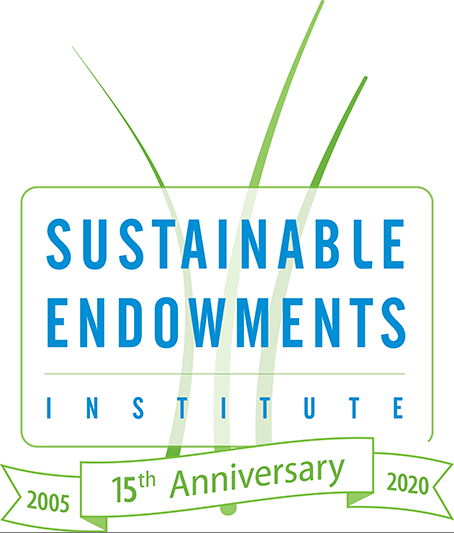GRITS
GRITS is a secure, account-based web tool designed to streamline the tracking and calculation of project-level energy, financial, and carbon savings data for all sustainability projects and efficiency improvements.
The platform allows users to move beyond spreadsheets for all energy and resource efficiency work. With GRITS, you can calculate accurate and up-to-date information on proposed, in-progress, and completed projects, access project data from other organizations, and transform the data into graphs and visuals to share with your team or your community, all in one place.
A free version of GRITS is available to many organizations through the Sustainable Endowments Institute’s many partnerships. Subscription prices are based on your organization’s operating budget. For more information, visit gogrits.org.
The Billion Dollar Green Challenge
The Billion Dollar Green Challenge (The Challenge) encourages universities, city and state governments, K-12 schools, healthcare organizations, airports, and other institutions to invest in self-managed green revolving funds, with the goal of creating a combined total of one billion dollars in funding. Participating institutions will achieve reductions in operating expenses and greenhouse gas emissions, while creating regenerating funds for future projects. To find out more about The Challenge, please visit www.GreenBillion.org.
[2016 Report] Multi-Sector Survey on Energy Efficiency Tracking Platforms
As inclusion of greater sustainability practices and operational policies to reduce energy use takes root in buildings and campuses across the country, there is a growing need to better track, manage, and share the results that these projects produce. In the brief report, Exploring Energy Efficiency: Multi-Sector Survey on Energy Efficiency Tracking Platforms, SEI examines the impact that such tracking tools have on their users and their overall effectiveness for meeting institutional sustainability goals.
SEI developed this brief report to encourage stakeholders to evaluate their own institution’s needs as well as compare against peers in their own field. By examining the five different sectors of healthcare, higher education, K-12 school systems, municipalities, and corporations, SEI sought to examine the overarching commonalities for organizations appearing to prioritize reducing energy use, reducing operational costs, and more closely aligning with institutional environmental and carbon reduction goals.
[2014 Report] College Endowment Investment Trends and Best Practices: An Analysis of STARS Data
College Endowment Investment Trends and Best Practices: An Analysis of STARS Data analyzes the Sustainability Tracking, Assessment, and Rating System’s (STARS) data from all 178 institutions that earned at least one of the six STARS investment credits. The aim is to provide accessible information to enable schools to learn from each other’s experiences, thereby fostering more effective endowment investment policies.
Building Energy Savings Together (BEST) Fund
The BEST Fund (Building Energy Savings Together) is a pooled green revolving fund (GRF) that will provide under-resourced institutions with the capital needed to invest in energy efficiency projects on their campus. The fund seeks to help institutions reduce the financial and environmental impacts of energy waste through new investments that will drive cost savings. As lowered operating costs are realized, the savings are then reinvested back into the fund. This investment model creates a regenerating cycle of capital that gives institutions the opportunity to re-invest the savings into future efficiency projects.
While more than 140 institutions nationwide have implemented a GRF on their campus, many of those institutions with the greatest need often have the least ability to marshal the financial resources necessary to develop and manage a GRF. The BEST Fund will bridge that gap by providing the necessary resources and guidance to these institutions. In the long-term, the BEST Fund will develop in-house capacity at these institutional partners that will enable them to manage their own GRFs by utilizing the savings stream from the Fund’s initial efficiency projects.
The BEST Fund offers a new financial pathway for all institutions, regardless of endowment wealth, to address their environmental emissions by enforcing the business case for sustainability: reduced financial cost is achievable through strategic and sustainable efficiency improvements. The Fund also creates an opportunity for these institutions to connect with institutional sustainability goals and national movements to address environmental concerns.
The pilot phase of the Fund seeks to manage $1-$2 million in deployed capital to prove the model. Within three years, SEI will scale the BEST fund to $10-$20 million range to give access to a larger number of under-resourced institutions. Given the multiplying effect that active GRFs have seen over the past five years, SEI’s research has demonstrated that the BEST Fund has the potential to leverage investments of at least $70 million in projects over the next decade, an initiative that will save institutions more than $350 million over the lifespan of those investments.
The BEST Fund offers an innovative pathway to greater resilience for under-resourced institutions by reducing their energy costs and greenhouse gas emissions. For more information on the Fund or to get involved, please email Dan Last, Director of the BEST Fund, at dan@endowmentinstitute.org.
Leadership in Energy Efficiency Financing Network
The Leaders in Energy Efficiency Financing (LEEF) Network is a New England-focused program to help implement green revolving funds (GRFs) in higher education, healthcare, municipalities, and nonprofits. LEEF functions as an information distribution system focused specifically on the implementation of GRFs at institutions in Massachusetts and throughout New England. The network provides access to cross-sector collaboration and peer-to-peer contact. LEEF staff offer presentations that can be tailored to fit the needs of many organizations and are available for strategy sessions with working groups and committees. The LEEF program also provides hands-on support for developing documentation and proposals for GRF implementation.
All participation and services of the LEEF Network are free due to the generous support of the Barr Foundation, which established the LEEF Network in Massachusetts, and the John Merck Fund that expanded the network to include Maine, New Hampshire, Rhode Island and Connecticut. Vermont ‘s participation in LEEF is supported under an existing program partnership with the Vermont Energy Investment Corporation. To find out more information on the LEEF program, please contact us at [email protected].
The Fossil Fuel Divestment Campaign
Since June of 2011, SEI has acted as a campus and endowment consultant for the Fossil Fuel Divestment Campaign, working with student groups and partner organizations to advocate for colleges and universities to divest their endowment funds from fossil fuel companies. For more information on the campaign, visit WeArePowerShift.org/DivestCoal and GoFossilFree.org.
The College Sustainability Report Card (The Green Report Card)
The College Sustainability Report Card was the first comparative and independent evaluation of campus and endowment sustainability best practices at colleges and universities in the United States and Canada. The Report Card focused on policies and practices across nine categories: Administration, Climate Change & Energy, Food & Recycling, Green Building, Student Involvement, Transportation, Endowment Transparency, Investment Priorities, and Shareholder Engagement. The Report Card was designed to identify colleges and universities that were leading by example on sustainability with the aim of providing accessible information for students, professors, and staff to establish more effective sustainability policies.
In its fifth edition and most recent edition, the College Sustainability Report Card covered the colleges and universities with the 300 largest endowments in the United States and Canada, as well as 22 additional schools that applied for inclusion. The profiled schools have combined holdings representing more than $325 billion in endowment assets, or more than 95 percent of all university endowments. While Report Card years 2007 through 2011 are available online, the project is currently suspended and no research is being conducted for future Report Cards at this time. Since its creation, the Report Card has developed a more robust methodology, and engaged in a partnership with other sustainability assessment organizations to reduce survey fatigue. Visit www.GreenReportCard.org to learn more about the Report Card and view sustainability grades for hundreds of colleges and universities.
The Minority-Serving Institutions Green Report
In 2010, SEI in partnership with UNCF’s Building Green Initiative published the Minority-Serving Institutions Green Report, which surveyed over 50 tribal colleges, Hispanic-serving institutions and historically black colleges and universities about their sustainability practices.


